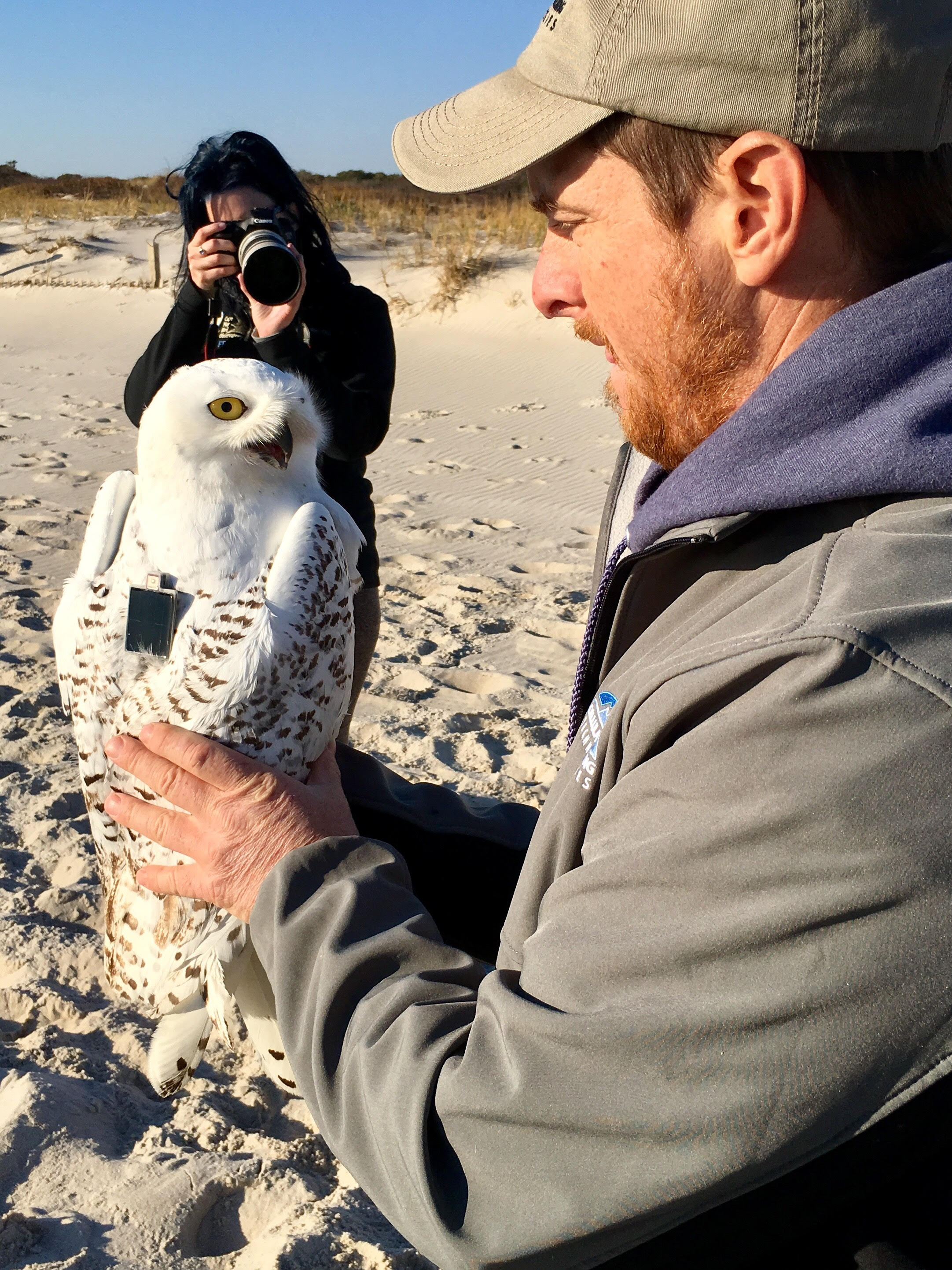COURT HOUSE – Spotting a Snowy Owl is a rare occurrence in New Jersey. These birds spend most of their lives in the Arctic and only rarely fly this far south.
But 2017 is becoming the year of the Snowy Owl in New Jersey, and New Jersey Audubon is eager to capitalize on what appears to have been a strong Arctic breeding season, and a rare opportunity to learn more about this elusive raptor.
Early Nov. 29, partners of Project SNOWstorm, including New Jersey Audubon staff, were stationed on the shores of Island Beach State Park, following reports of a Snowy Owl sighting. By 7:55 a.m., one was trapped in a net, quickly banded, fitted with a transmitter, nicknamed “Island Beach” and released back into the wild.
It was an enormous opportunity and a tremendous win for Project SNOWstorm, a national, all-volunteer, Snowy Owl research and conservation organization of which New Jersey Audubon is a partner. The group was founded in 2013, during the unprecedented irruption of Snowy Owls in the United States, in which some birds traveled as far as Florida and Bermuda.
David La Puma, director of New Jersey Audubon’s Cape May Bird Observatory, who was stationed on the beach, said he was elated. “These birds are like little gifts from nature, and no matter whether it’s your first or your fiftieth, you always get goosebumps when you’re fortunate enough to encounter a Snowy Owl,” he said.
The bird was caught by Mike Lanzone, president and CEO of Cellular Tracking Technologies, a key partner in Project SNOWstorm which is donating the transmitter.
New Jersey typically gets a handful of Snowy Owls each winter, or maybe none at all. This year, there is the possibility that dozens could grace our shores, as indicators show conditions are right for Snowy Owls to wander much further south than usual.
Researchers with Project SNOWstorm offer a hypothesis about this great southward movement, which seems to occur once every four years. They believe it is because lemmings, the preferred prey of Snowy Owls, go through regional population explosions at about the same interval. Owls feeding on lemmings and other prey tend to breed more effectively and produce more offspring, which then compete for winter home ranges, driving more of them south in search of new territory.
In 2013, those Arctic rodents had a banner year on the Ungava Peninsula in Northern Quebec, fueling a highly successful breeding season for the owls that flocked to that area. This past breeding season, Canadian wildlife biologists studying caribou reported an unusually high number of Snowy Owls around the same area, consuming plenty of food, prompting flights to New Jersey and beyond.
La Puma said New Jersey Audubon is eager to learn from “Island Beach.” The solar-powered transmitter that was attached will record the location of the bird at programmable intervals as short as every second, providing unmatched detail on the movement of the Arctic raptor, 24 hours a day.
Researchers were especially pleased that “Island Beach” is a heavy Snowy Owl, as the transmitter weighs about 40 grams – or as much as seven U.S. quarters – and must be less than 3 percent of the bird’s weight to ensure the transmitter does not negatively affect the bird.
Of concern: Snowy Owls can be remarkably approachable, especially young birds early in the winter. Because they are often so naive around humans, it’s easy for birders, photographers and the general public to approach them too closely.
“What is an exciting encounter for one person can be compounded by many people over time, leading to harassment of the bird and eventually putting the bird in dangerous situations,” La Puma said. “The bird may be chased into New Jersey traffic – something snowies don’t understand – subject to undue stress when it should be resting and conserving energy, or increasingly attacked by other raptors like an eagle or peregrine falcon, or mobbed by crows.”
La Puma said people must keep their distance, suggesting they remain in their cars, use a spotting scope and a telephoto lens, and be content to watch from a safe distance.
“A good rule of thumb is an owl at rest is an unstressed owl,” he said. “Alert eyes and/or an upright posture are signs that you are too close.”
New Jersey Audubon is raising money for transmitters, each costing $3,000, as part of its participation in Project SNOWstorm. The goal is to install 15 transmitters nationally, and two in New Jersey. Learn more at njaudubon.org and ProjectSNOWstorm.org.








